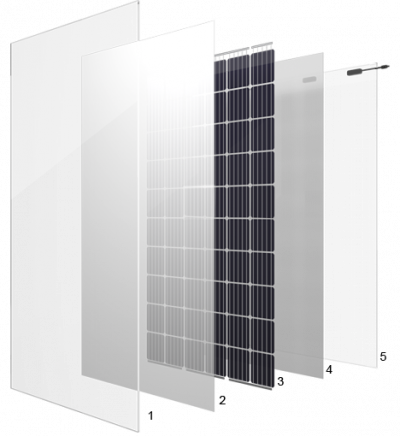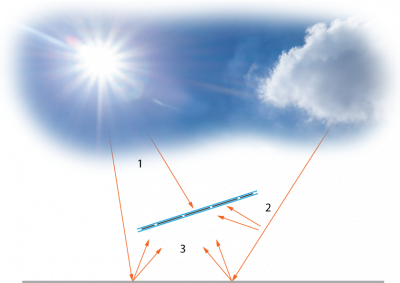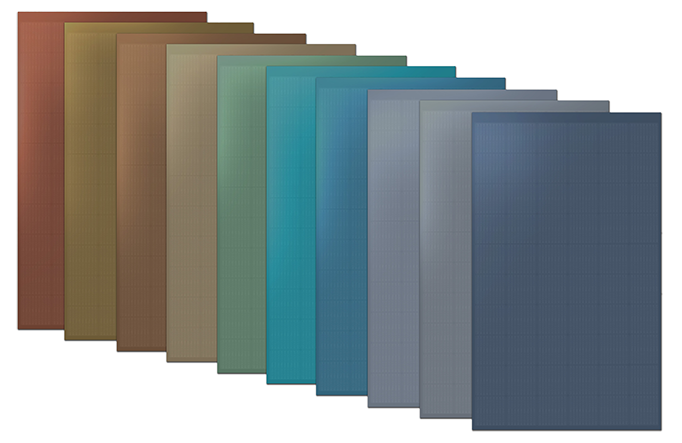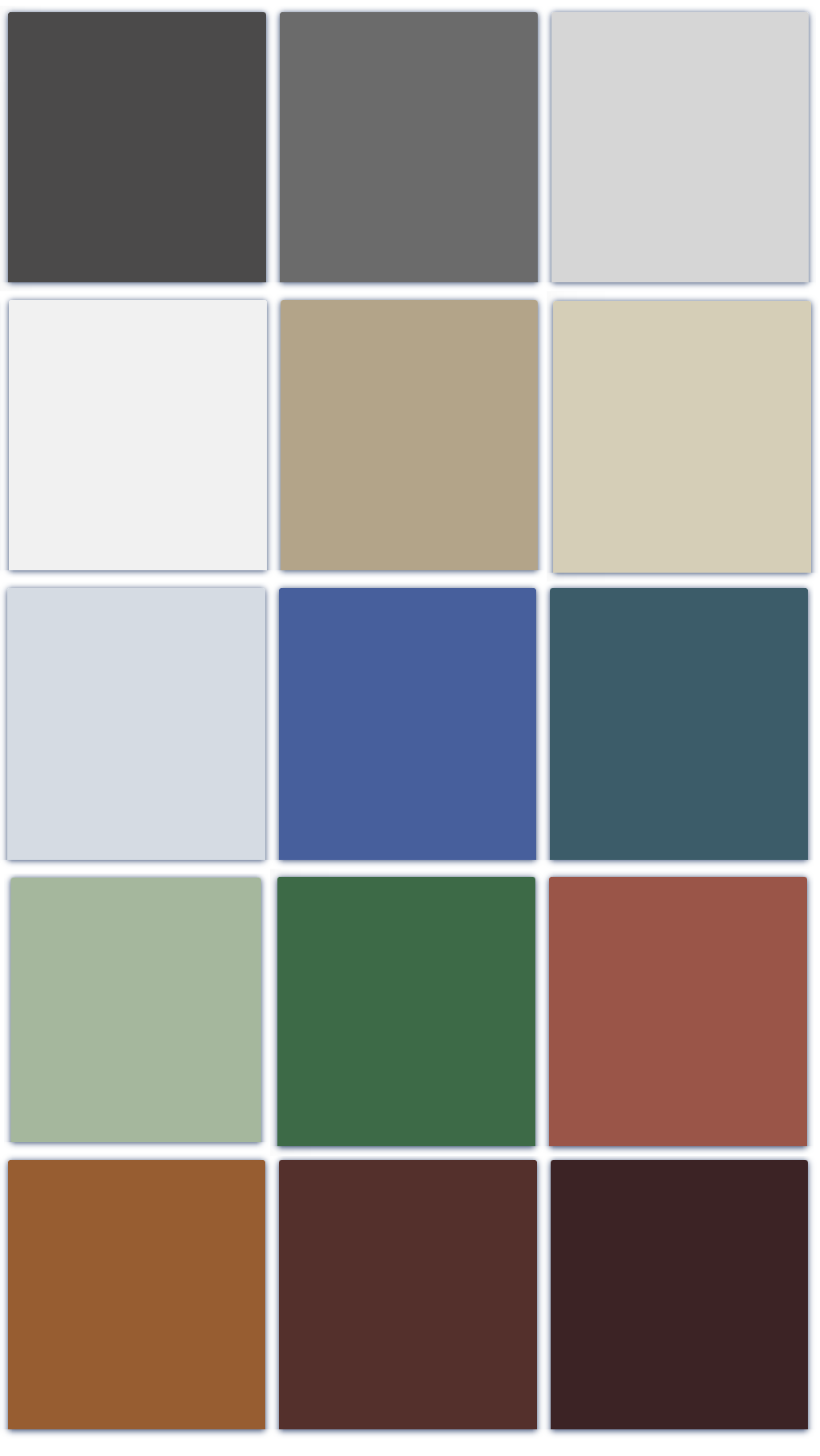Benefits of glass-glass modules

The usual structure of PV modules is a laminate consisting of a sheet of tempered glass 3 to 4 mm thick on the front side, and a flexible polymer sheet on the back side. To ensure sufficient rigidity an aluminum frame must be added. Today however, industrial techniques make it possible to temper thinner glass, which makes it possible to produce panels composed of a double layer of glass without being too heavy, and rigid and solid enough to not need an aluminum frame. The double-glass module structure offers many benefits compared to the traditional glass-backsheet structure.
1. tempered front glass, 2 & 4: POE encapsulant, 3. cells, 5. tempered or hardened rear glass
Benefits of frameless panels
Installers have preferred framed panels to this day, because with the mounting systems available on the market, installation is simpler and faster than for frameless panels. In addition, with the photovoltaic industry heavily focused on standardization and mass production, framed panels have established themselves as the market standard. This is obviously a shame for investors and operators of solar power plants, who cannot benefit from the objective advantages of frameless panels.
Based on this observation, Suncell has developed different mounting systems suitable for frameless panels, which allow rapid, safe and economical mounting of this type of panel.
Bifacial modules

Over the past 12 years the photovoltaic industry has been able to improve the efficiency of photovoltaic modules thanks to technological advances with an average increase of 1.5% per year. In this perspective the appearance of bifacial panels represents a real disruption. By using the same stable crystalline cell technology, and simply making the 2 sides photosensitive, you can get up to 35% more electricity with what is known as Bifacial Boost. However, the module must be mounted in a specific way in order to take full advantage of the bifacial boost.
1. direct irradiation; 2. diffuse irradiation; 3. indirect irradiation reflected by the ground/roof albedo
Bifacial boost
Suncell® solar systems
Suncell® has developed a range of mounting systems specially designed for frameless panels, which will be marketed in summer 2020. For each installation the complete system, including the panels and the mounting system, is sold with a comprehensive guarantee.
Bifacial system for flat roofs, guaranteeing a bifacial boost > 20%, patent pending
BIPV system, roof integrated – replacing tiles, Terra-cotta or anthracite colored modules
BAPV system for residential roofs, black visual appearance
BAPV system for industrial corrugated sheet roofs, black visual appearance
Made in Europe
Simple and fast planning with PV Designer 3D, with export of drawings in 2D and 3D vector format
Photonic pigments with high transmittance and selective color reflection
This technology is validated for long-lasting use in solar applications and can be integrated in solar module technology in a cost-effective manner.
It enables architects, designers and developers to make solar energy a permanent fixture in building design, helping to promote the climate neutrality in construction.
The technology is based on the principle of coloring by interference, whereby the rays of sunlight are split like in a prism. The colored layer lets through only the light that the solar cell needs to generate energy, meaning that only the wavelengths that produce the color are reflected. The result is a beautiful color effect with minimal loss of solar module performance.

